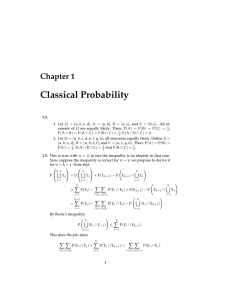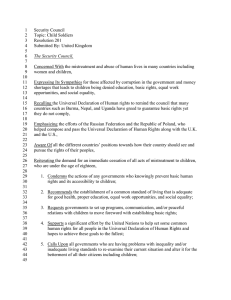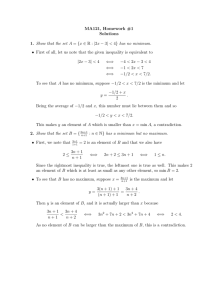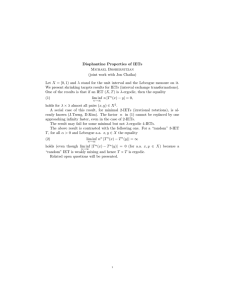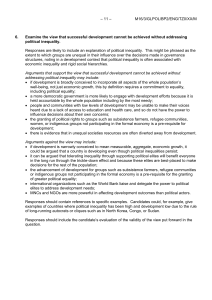Analysis Homework #2 Solutions 1. 2.
advertisement
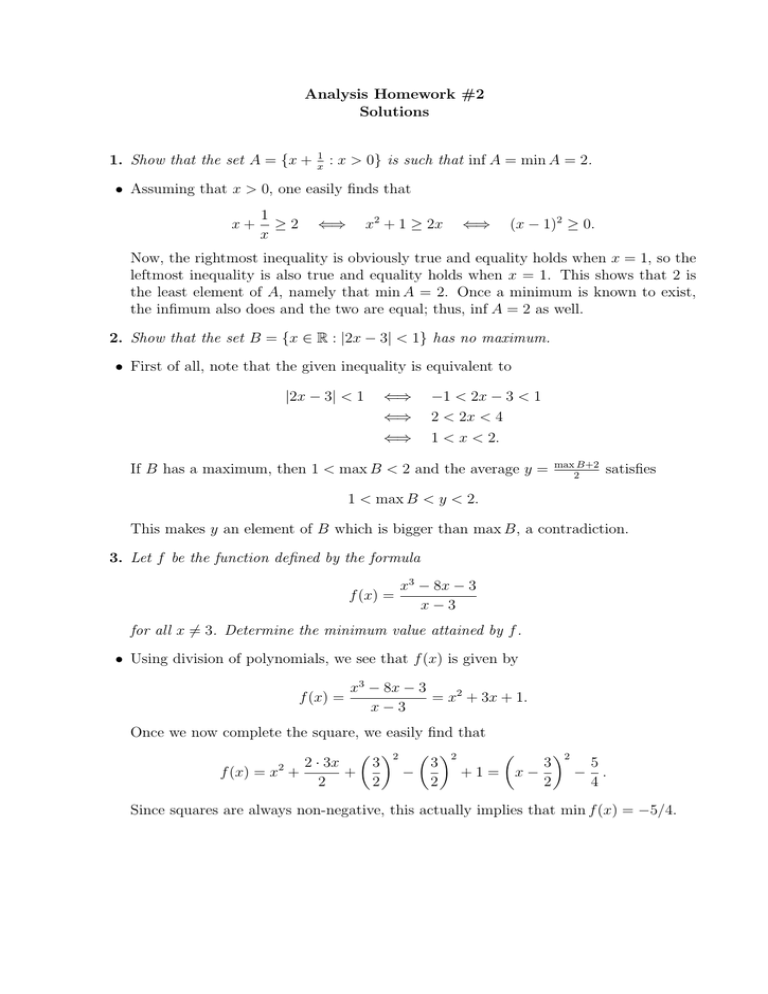
Analysis Homework #2
Solutions
1. Show that the set A = {x +
1
x
: x > 0} is such that inf A = min A = 2.
• Assuming that x > 0, one easily finds that
x+
1
≥2
x
⇐⇒
x2 + 1 ≥ 2x
⇐⇒
(x − 1)2 ≥ 0.
Now, the rightmost inequality is obviously true and equality holds when x = 1, so the
leftmost inequality is also true and equality holds when x = 1. This shows that 2 is
the least element of A, namely that min A = 2. Once a minimum is known to exist,
the infimum also does and the two are equal; thus, inf A = 2 as well.
2. Show that the set B = {x ∈ R : |2x − 3| < 1} has no maximum.
• First of all, note that the given inequality is equivalent to
|2x − 3| < 1
⇐⇒
⇐⇒
⇐⇒
−1 < 2x − 3 < 1
2 < 2x < 4
1 < x < 2.
If B has a maximum, then 1 < max B < 2 and the average y =
max B+2
2
satisfies
1 < max B < y < 2.
This makes y an element of B which is bigger than max B, a contradiction.
3. Let f be the function defined by the formula
x3 − 8x − 3
f (x) =
x−3
for all x ̸= 3. Determine the minimum value attained by f .
• Using division of polynomials, we see that f (x) is given by
f (x) =
x3 − 8x − 3
= x2 + 3x + 1.
x−3
Once we now complete the square, we easily find that
( )2 ( )2
(
)2
3
3
3
5
2 · 3x
2
+
−
+1= x−
− .
f (x) = x +
2
2
2
2
4
Since squares are always non-negative, this actually implies that min f (x) = −5/4.
4. Use the ε-δ definition of limits to show that lim (4x − 3) = 5.
x→2
• Let ε > 0 be given and note that
|4x − 3 − 5| = |4x − 8| = 4|x − 2|.
Taking δ = ε/4, we conclude that
|x − 2| < δ
=⇒
|4x − 3 − 5| = 4|x − 2| < 4δ = ε.

